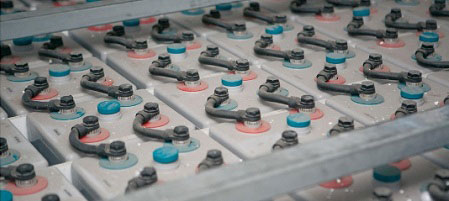Batteries have been blowing up lately. No, I’m not talking about EV battery fires. I’m talking about the immense hype around storage. With increased interest in storage coming from Utilities, Governments, and Companies, we thought it was time to discuss in more detail the storage opportunity and how to get involved in this growing industry.
We’re not just talking about lead-acid batteries providing backup power for your off-grid home out in the country; this is sophisticated technology that can provide backup power, alter your current utility bill, and service the grid simultaneously.
Below is a table that categorizes the different value propositions of storage. The combination of continually-decreasing costs, recent technological innovations, and capability to deliver more reliable power to both the grid and customers alike has created a perfect match for renewable energy.
So what does this mean for the solar industry? The possibility of adding storage to solar projects sounds attractive in concept, but what is the material impact for solar customers? The solar value proposition has traditionally been about utility bill savings, but typically the industry has only been able to confidently predict savings for the energy (kWh) portion of utility bills. The addition of storage offers customers clear savings on the power, or demand, portion of utility bills (kW).
Yes, solar alone does help reduce demand charges, but it does so without enough predictability to write a contract against. The addition of storage, if coupled with sufficiently sophisticated software modeling allows PPA providers and financiers to guarantee savings and capture the revenue that has been otherwise difficult to quantify. How much of an impact does this have? Well that depends overwhelmingly on the utility territory and rate structure. With the addition of incentives in areas such as California and ConEdison in New York, solar + storage looks like an increasingly attractive investment.
Storage has come a long way since the days of off-grid home backup. Currently, storage has 3 different areas of potential value. Categorized below, these generally break down into backup services, demand services, and utility services.
| Service | Definition | Value | Common use |
| Backup | Providing backup power when the grid is down or for off-grid systems | Depends on application | Off-grid homes, Areas of low grid reliability |
| Demand | Cutting down demand peaks and shifting demand to lower cost times | Cuts demand charges on utility bills – $X/kWShifts consumption to times with lower cost energy rates | Utilities with high demand chargesUtilities with high Time Of Use (TOU) charges |
| Utility | Providing grid services, in the form of frequency regulation and demand response | Revenue provided by utility or Independent System Operator (ISO) for providing demand response or ancillary services | ISOs that provide markets for Demand Response or Frequency Regulation |
While the current applications are interesting, the future of the storage industry has far more potential. With the ability to control demand curves and added abilities to control individual circuits, the storage provider can shift into the role of “energy controller” with the ability to turn assets previously viewed as electricity drains into potential revenue sources.
The opportunity is clear, but the issue is how one deploys this new technology. This is where the storage industry needs to coalesce on a business model. Further, deploying solar + storage is logistically difficult since the two contracts need to interact in order to reap additional benefits like taking the Investment Tax Credit on at least a portion of the storage.
The two most commonly-used models for the storage industry are: Leasing and Shared Savings structures. The major difference between the two is the risk and reward for savings and potential revenues. The Shared Savings model is exactly as it sounds; it takes total savings and splits the benefit between customer and system owner. By aligning incentives and risks, it guarantees the customer savings on day 1 without risking the provider failing to deliver on the savings. The issue with this model is that financiers are typically looking for fixed, contracted cash flows. Once you start showing a floating cash flow, the cost of capital immediately ticks upward; add in new technology risk and you’re talking some pretty expensive capital. The other option is a pure-play lease option, where the customer pays a fixed rate for the equipment that is independent of savings and revenues. While this model does offer fixed cash flows for financiers, it also places performance risk squarely on the customer, which can become an issue for customers that aren’t comfortable with this new technology.
The addition of solar into the mix further complicates issues surrounding the contracting structure, which leads to a world of possibilities and non-optimal scenarios. Ideally, the investor for the solar and storage components is the same. This allows the investor to capitalize on overall savings and optimize the whole package for the customer, as opposed to just one product or the other. No one that I know of has created a solar + storage contract yet; we’re hoping to be the first.
Published with permission from the original publication on SOL SYSTEMS By Ben Margolis.















Comments